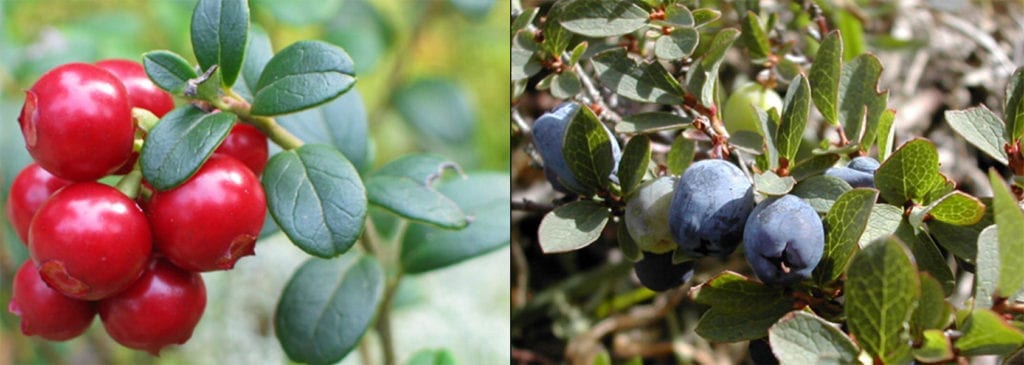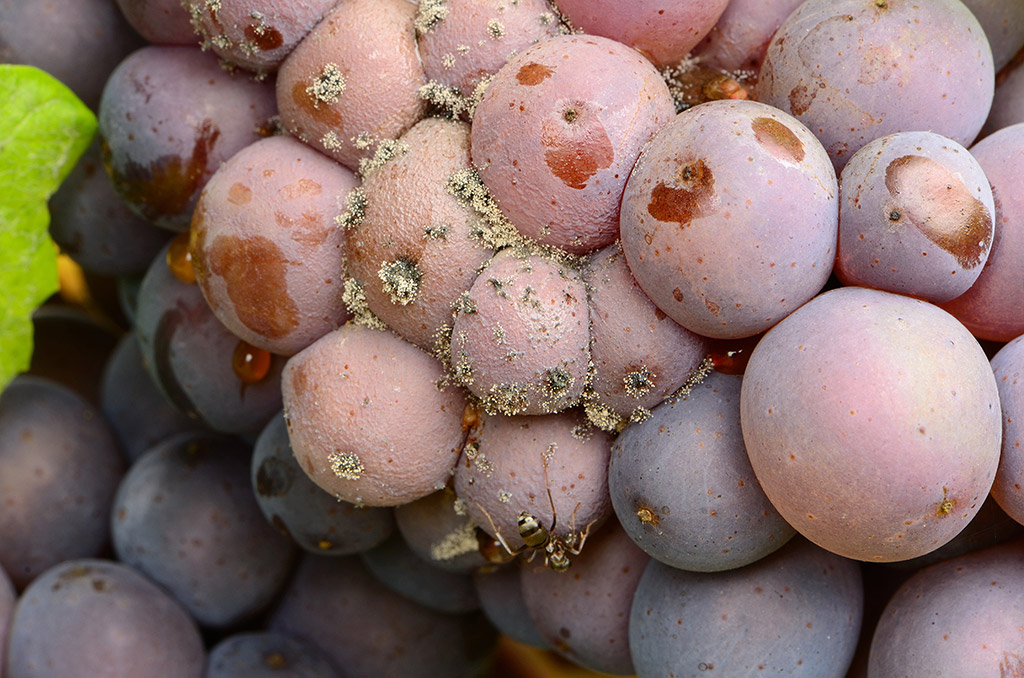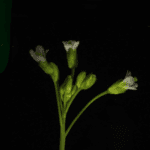Strawberry shortcake. Raspberry torte. Blackberry cobbler… all berry-filled dishes sure to delight. Or disappoint. Botanically speaking, the “berries” in these delectables are not actually berries.
The grapes used to make wine or champagne, however, are berries—as are watermelons and even chilli peppers.
Stumped?
Berries are fruits that develop from a flower with one single ovary and consist of three distinct layers: an outer skin (the exocarp), a fleshy middle (the mesocarp), and a centre filled with seeds (the endocarp).
Whether we are talking true berries or not, researchers are continually uncovering intriguing insights from the world of berries. Here are three:
1. In the Arctic, the further north you go the more productive berry plants can be
Berries and berry picking hold significant cultural importance for Indigenous Peoples living in the Canadian Arctic, providing physical, mental, and community wellbeing.
“When you do plant ecology in the Canadian Arctic, people always ask ‘how are the berries doing?’. ‘Are they growing well?’ Is it a good year for berries?’ It is the main plant that people are interested in,” Dr Noémie Boulanger-Lapointe, a post-doc at the University of Iceland, shares. Based on lifelong observations and knowledge of local environs, some Indigenous local knowledge holders are reporting a new trend; berry abundance is declining and becoming more variable from one year to the next. In a study published in Arctic Science, Boulanger-Lapointe and colleagues explored some of the climatic and environmental factors that influence the number of berries a plant produces (or productivity).
One might expect the further south you go, the more productive the berry plants are, simply because it is warmer. But that wasn’t the case. “Actually, what we found is that the plants produce more berries the further north you go in their distribution range,” says Boulanger-Lapointe.
For blueberries, the onset of the growing season and the availability of water during the growing season seemed particularly important for productivity in the High Arctic. As the study describes, precipitation in June in the High Arctic tends to fall as snow, dampening blueberry productivity. In July and August, precipitation tends to fall as rain, but this rain only makes a difference on productivity if the plants are growing in a dry area. Meanwhile, further south, climatic elements like temperature during the growing season appear to be more important for blueberry productivity.
 Cranberry (left) and blueberry (right) | Boulanger-Lapointe et al.
Cranberry (left) and blueberry (right) | Boulanger-Lapointe et al.
As for crowberries and cranberries, the researchers didn’t find strong relationships between climate and productivity. This isn’t to say there isn’t a relationship—more that responses can be complicated. While this study “used the most extensive berry productivity dataset collected in the Canadian Arctic to date,” the eight-year time series is relatively short to test all the variables that may contribute to regional differences.
On a local scale, “the landscape is not homogeneous,” Boulanger-Lapointe adds, explaining how topography and variability in the terrain can influence plant productivity. “In most areas, you can see that there are little dips and little hills, and the berries are going to be more or less abundant, depending on the topography and microclimates.”
2. The taste of wine can change from one year to the next, depending where it is grown
Nuanced spatial patterns are what viticulturalists—winegrowers—refer to as terroir. Terroir is the interaction of the climate, soil, and geomorphology that impart characteristics to the berries. For grapes, terroir can dictate the concentration of monoterpenes (which give wine their aromas), brix (which influences the grape’s sugar content and thus the alcohol level), and titratable acidity (a measure of the wine’s acidity).
As any sommelier will tell you, wine created from grapes grown in the same part of a vineyard (a block) can vary from one year to the next in response to climatic variability. While some embrace this variability, it can cause trouble for others. This is especially true for premium wines whose consumers expect a certain level of stability in the drink’s taste.
But as a study published in the Canadian Journal of Plant Science shows, vineyard blocks can produce grapes with characteristics that are stable across years.
In Canada’s Niagara Peninsula, Dr. James Willwerth and Dr. Andrew Reynolds from the Cool Climate Oenology and Viticulture Institute at Brock University measured all things grapevine for blocks at 10 Riesling vineyards. The kaleidoscopic geospatial maps created from the data revealed how monoterpenes, sugar content (brix), and acidity of grapes vary within and among blocks.

Spatial patterns in brix from 2005 to 2007 for the Myers Vineyard site | Willwerth & Reynolds
Blocks with less water in the soil and vine leaves produced grapes with higher brix, whereas blocks with more water in the soil and vine leaves produced grapes with higher acidity levels. These spatial trends in brix seemed relatively stable over the study period, whereas trends in acidity were more temporally variable, with only a few of the vineyards showing any stability in their measurements. Monoterpenes seemed to be a bit of a mixed bag, with either high or very low water in the leaves impacting their levels. As for soil, its relationship with grape composition was relatively minor.
3. Different species of grape vines have different microbial cities living on their leaves
The vines that make red, white, or rosé wines are home to a host of microorganisms that form entire microbial communities. Some of these microorganisms are good for the vines, helping to fix nitrogen and fend off disease. Others can wreak havoc causing mildew that can decimate the crop. As Shiwei Zhang, Yuan Wang, and fellow researchers from the Research Center for Eco-Environmental Sciences, Chinese Academy of Sciences, demonstrated in a study published in the Canadian Journal of Microbiology, different varieties of grape host different microbial communities.
Focusing their efforts on commonly cultivated grape varieties, the researchers collected leaves from nine different varieties of grapevine plants all grown in a single vineyard. The researchers extracted sequences of ribosomal ribonucleic acid (rRNA) from the microorganisms living on the leaves using a technique called high-throughput sequencing. Then they analysed the sequences to build a picture of the microbial communities that cohabitate with ripening grapes.
The researchers found that at the genus level the microbial communities on leaves showed substantial differences among the grape varieties. Zinfandel had higher abundances of the bacteria genera Pseudomonadales and Pantoea than any other variety. Meanwhile, the fungal genus Alternaria didn’t seem to thrive on Syrah as well as the other varieties. This is good news for Syrah—some species of Alternaria cause ‘bunch rot’, destroying the berries (grapes) and any hopes of turning them into wine.
 “Bunch rot” on grapes can be caused by some species of the fungus Alternaria.
“Bunch rot” on grapes can be caused by some species of the fungus Alternaria.
Microbial communities may differ among varieties because of differences in the thickness of the grape skin. The researchers suggest that Zinfandel’s particularly thin skin could make it more susceptible to Pantoea. Microbial variation may also come down to growing methods. To get the best yield out of their grapes, viticulturalists apply different types of trellising (structures to grow the vines in different shapes) to different varieties, invariably altering the microclimate experienced by each variety—and their microbial communities.




